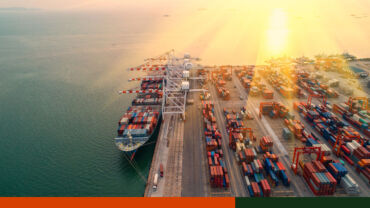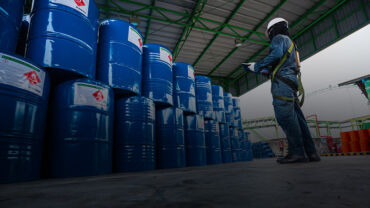For several years now, businesses with supply chains that include the United Kingdom and the European Union have been warned that they should prepare for inevitable changes and disruptions as a result of Brexit. But with mere weeks to go before Brexit’s January 1, 2020 deadline and still no free trade agreement between the UK and the EU, the question no one can definitively answer is: What should businesses be preparing for?
After all, the repercussions of a no-deal Brexit will be infinitely more varied and complicated than the impact of a freshly negotiated free trade deal. The former could cause chaos and confusion for years to come, whereas disruptions from the latter would likely be absorbed and resolved in a matter of months.
The truth is, trade deal or not, businesses impacted by Brexit need to plan for both possible scenarios. Each company affected needs a contingency plan that includes not only operational and strategic supply chain considerations but also the ripple effect of Brexit on competitors, customers, and their respective industries as a whole. The COVID-19 pandemic is another critical factor that must be considered as the pandemic continues to cause shipping delays and other supply chain disruptions by itself.
Brexit fallout is inescapable for supply chain and trade compliance departments
All acknowledge that the scenario planning and modeling capabilities necessary to weather the Brexit storm will require a significant investment of time, resources, and technology, particularly in the expertise and software systems needed to analyze complex modern supply chains. The average UK business has more than thirty different suppliers, and many larger businesses source hundreds or even thousands of components from dozens of countries in and outside the EU.
In practice, these supply chains involve a vast network of secondary manufacturers and producers, which ship their goods around the world by truck, rail, ship, and air. Most of these entities have intersecting and overlapping business dealings with companies, industries, and customers all over the globe, not just with the UK or EU, which means that very few businesses—especially multinationals—can escape the fallout from Brexit.
Furthermore, whether or not a free trade agreement between the UK and EU materializes, import/export activities between the UK and 27 countries of the EU will be governed by EU Customs Rules, which will require an extra level of scrutiny that UK businesses have never had to contend with until now. At every port of entry, UK importers and exporters will need to produce new documentation for origin of goods, product certifications, licensing requirements, and other rules and regulations, creating significant post-Brexit trade compliance concerns. More stringent customs checks at borders will also mean backups and delays. Indeed, the UK government warned in September that after January 1, 2020, queues to cross the English Channel from the UK to the EU could see up to 7,000 trucks waiting in line for several days.
Rethinking supply chain design post-Brexit
For supply chain managers accustomed to smooth trade operations and the efficiencies of just-in-time inventory management, these looming realities will require some significant rethinking.
Efficiency and cost-containment may have been the order of the day before Brexit and the pandemic, but companies that want to avoid future supply chain disruptions in an increasingly fractured trade environment are forced to prioritize resiliency and flexibility over efficiency, even if it costs more. That might mean warehousing four to six weeks of your product as a buffer against border delays, sourcing more materials from local or regional suppliers, diversifying trade routes to minimize disruptions, or even moving manufacturing facilities to another country. It could also mean investing in more people and better technologies to analyze key data and keep track of new tariffs, regulations, and documentation requirements, including the new UK Global Tariff (UKGT) which goes into effect on January 1.
Not to put too fine a point on it, but a full reckoning with Brexit requires an end-to-end review of existing enterprise systems and, where necessary, an extensive reengineering of supply chain processes to meet the peculiar demands of this unique historical moment.
The following are just a few day-to-day data points that Brexit will require companies to track:
- New HS product and shipping codes for and from every country
- Alignment of HS codes with third-party carriers, forwarders, brokers, etc.
- New regulations and licensing requirements
- New import/export applications, processes, and protocols
- New tariffs and duties
- Different product quotas
- Altered source-shifting criteria (real-time cost/benefit analysis)
- The increased potential for sanctions violations and possible fines
From a strategic standpoint, there are several additional factors companies will need to consider:
- Potential short-term and long-term supply chain disruptions
- Optimal sourcing strategies and inventory management
- Future threats to network resilience
- The need for buffers against future trade conflicts
- A need for better data-based competitive intelligence
- Cybersecurity threats in a more diversified trade environment
- Plans B and C for delays and/or shortages
- Additional risks and penalties for noncompliance
- Training for internal staff
Assessing post-Brexit risks and building resilience in your trade compliance and supply chain strategies
These are just a few of the many supply chain issues facing companies in the crosshairs of Brexit. There are plenty more to come, and many of them require data collection and processes that companies who used to enjoy a free flow of goods and services between the UK and EU may find onerous and confusing.
Import/export declarations, product origins, commodity codes, authorization affidavits—these details and others are part of what will become, post-Brexit, a much more data-intensive process for overall supply chain management. Inherent uncertainties over the next year or two will also require more extensive scenario planning and computer modeling to assess supply chain risks and identify opportunities for cost reduction, resilience buffering, and efficiency.
Thomson Reuters uses industry-leading technology to power the ONESOURCE Analyzer Suite. This automated solution allows your trade compliance and supply chain departments to analyze your company-specific import and export data within multiple potential trade lanes. Trade Lane Analyzer, Duty and Tax Analyzer, and Tariff Analyzer can all be implemented separately to research duty rates, estimate duty and tax cost, visualize multiple trade lane “what if” scenarios, and strategically plan new import and export strategies.
Some large multinationals have studied the implications of Brexit for years, but a much larger cohort of mid-size and especially smaller companies have taken a wait and see approach, hoping that the parties will eventually reach a free trade deal. At the moment, that eventuality is looking more and more unlikely.
Preparing for multiple Brexit outcomes is no longer just an option; it’s a matter of survival. Whatever reality presents itself on January 1, 2020, companies that have invested in the necessary technology, assessed their risks, and gamed out a viable battle plan will have a significant advantage over that 7,000th truck in line at customs.
Download our free whitepaper, “Brexit’s Impact on Global Trade and How Technology Can Help Multinationals Prepare,” to learn more. You can also visit our Brexit resource hub for more insights on mitigating risk and managing Brexit-related supply chain disruptions.








